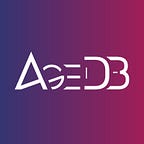Streamlining Manufacturing Collaboration with AGEDB: Performance Management System
Over the last decades, Industrial growth has made the process of mass-producing in the manufacturing industry very complex.
From the testing stage to mass production and distribution, the final products are delivered to the customers’ hands after complex series of collaboration across different departments in an organization. These complicated department structural collaboration require an explicit management system. Organizations work efficiently only when responsibility for collaboration, performance, and schedule management are clearly established. Therefore, business managers need to build a system that emphasizes accessibility and transparency of collaboration information and strengthens decision-making, technological innovation, and change for the efficiency of collaboration management.
Let’s take a look at the challenges a high-tech product manufacturers face.
Manufacturer A needed a system that could efficiently manage collaboration and overcome the following two problems.
Challenges
- Data is standardized.
Data in different formats were scattered across multiple systems, so each department had to go through a complicated process to obtain the desired data if the data needed was in another department’s system. As a result, there was a delay and inefficiency in managing and sharing the required information. - A data model to manage the collaboration.
In a situation where unstructured and structured data, online and offline, and departmental data are intertwined, no data model could quickly query, modify, analyze, and visualize data intuitively. A general relational data model was incapable of quickly querying and processing data with complicated links, which inevitably, led to problems with collaboration, such as delays in manufacturing schedules. In addition, a visualization platform was a necessary platform to check and analyze the collaboration flow at a glance, however, visualization of all unique data from each department in lack of standardized data and data model could easily be said impossible.
So what uniquely suit this particular situation in overcoming these challenges?
- Implementing data structures to manage collaboration processes and collaboration performance indicators.
AGEDB first standardizes fragmented data by department and stores it as a network model. AGEDB is a multi-model database that can search, process, and analyze unstructured and structured data in one database with the same storage engine. Since the structure of collaboration between organizations and departments is stored in the form of a network, business managers can more transparently check and flexibly manage the flow of online and offline collaboration and performance indicators. - To provide a platform to visualize collaborative data in a network structure and to inquire and analyze it.
Implements functions to view, manage, and analyze collaboration processes and collaboration performance indicators as an intuitive visualization platform. With this platform, the users can input search conditions to view various information about collaboration and identify indicators as charts.
Therefore, it shows the relevance of departments and tasks, and departments that do not achieve their goals can be distinguished. Managers can see at a glance the progress of the collaboration required amongst the departments to achieve more effective work synergy, higher achievement rate, and productive management on actions taken regarding the tasks assigned in each department.
With the system in place, Manufacturer A is now able to identify and control all the collaborative processes required to make a product at once.
With all departments collaborating on standardized data, interdepartmental communication will be smoother and the organization will operate efficiently. Collaborative index management is expected to innovate changes in the manufacturing process, such as preventing process accidents and improving product completeness through sharing. Through the system, the entire collaboration flow is delivered to executives and employees through a graph visualization tool platform.
Manufacturing know-how accumulated through various collaborative projects and ideas for the next product will be shared between departments, which will serve as a foundation for achieving more goals throughout the company.
Do your business need a performance management system? Are you looking to enhance your project management? Let us know and we can help! Find more information now at https://agedb.io !
